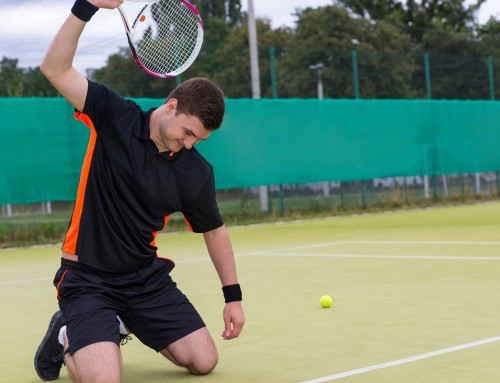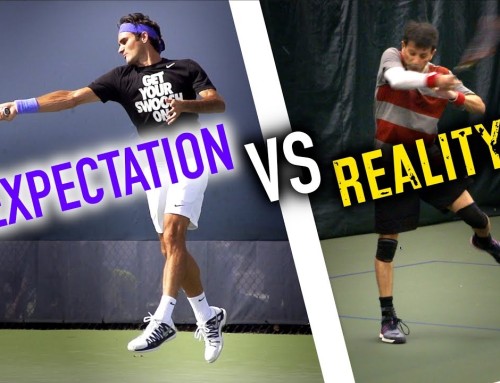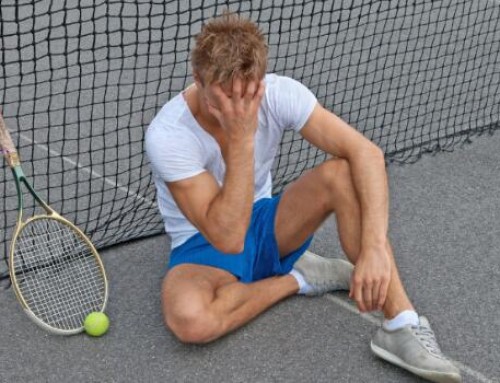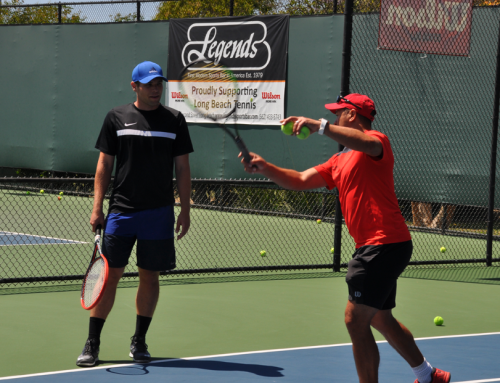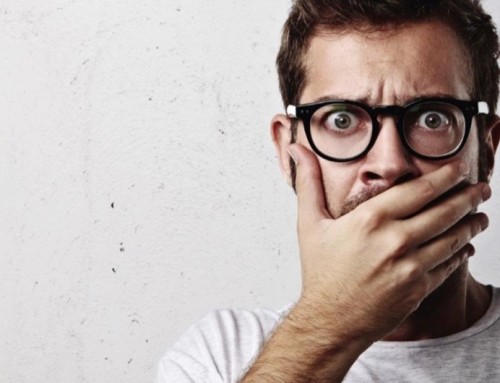Have you ever experimented between a one and two handed forehand or backhand? Is it ok to keep using two different shots on one side, or is it best to just pick one and stick with it? Also I talk about different ways to work on your game at home during the off season.
Download Transcript: Word Doc | PDF | Kindle | Text
Announcer : Welcome to the Essential Tennis Podcast. If you lave tennis and wants to improve your game, this podcast is for you. Whether it’s technique, strategy, equipment or the mental game, tennis professional Ian Westermann is here to make you a better player.
And now here’s Ian!
Ian Westermann : Hi and welcome to the Essential Tennis Podcast. Your place for free expert tennis instruction that can truly help you improve your game.
Thank you very much for joining me on today’s show. And I’ve got two quick things to talk about before we get to our listener questions and answers.
First of all, I want to let you guys know that there’s a new section of essentialtennis.com that has just gone up in the last day or so. And it is essentialtennis.com/clinics. It’s also up in the main menu, and all of the headers of the website. And in this section of the website you guys can see which clinics are upcoming, t heir locations, the price, descriptions, etc. And go check it out.
The Nebraska clinic which is coming up in March is the only one listed there right now. I’m going to have more added pretty soon. But you can sign up for the Nebraska clinic there. There’s only 12 spots available. So definitely check it out. And sign up if you think that you’d like to make it.
Next up, I want to talk to you guys a little bit about something that’s available on the website, and that is the option for donations. And I don’t like asking for money. I don’t like that at all, but I’ll be honest. It would really help me out a lot as I’ve do more and more on the website. Some regular donations would really be helpful.
And this is a way that a lot of big name podcasters support what they’re doing is through donations from listeners. I would just like to ask you guys to consider donating to Essential Tennis. And it doesn’t have to be much. In fact, $5 a month, a reoccurring donation would really be appreciated a lot. If you guys go to essentialtennis.com and go to the front page, on the bottom right there’s a link that’s says donate. You guys can check it out there. B ut there’s an option for $5 a month to $10 a month, $20 a month or a one time donation as well of an amount of your choosing.
B ut I would just ask you guys if the podcast has helped you. If it’s made a difference in your game. If you can prove your tennis game, because of the website or because of the podcast please consider giving a donation. And especially a monthly one would really help me out a great deal. Tennis lessons usually are $50, $60, sometimes $70 an hour. And I do 2 hours of audio instructions free every month. So we’re talking about a $120 if you’re to go out and take 2 hour private lessons a month. Now obviously the podcast is not the same thing as private instruction, but I think $5 dollars a month for 2 hours of instruction is a pretty darn good deal. So please consider that. And I would appreciate it very much if you were to be on board and support me with small donation each month.
Alright, let’s go ahead and get to today’s show. Sit back, relax and get ready for some great tennis instruction.
Alright, our first question that I’m going to answer for today comes to us Mayia and Mayia I hope I’m pronouncing your name correctly. It’s Mayia and for location she gives USA. So hopefully I’m saying that right. If I’m not I really apologize, B ut I’m going to go with Mayia for the show. And she wrotes to me with the following question.
‘This maybe a question that would not apply to many. However, I am interested of your opinion on keeping and practice 2 types of forehands: single and double handed. In the last year and a half I have been working exclusively on my new single handed forehand, but I can hit double handed as well. However, it needs to be practiced as everything else. I think that a double handed option keeps opponents surprised, and and it is an asset I should not lose. It is also kind of fun to have more options what is your opinion?’ She also says, ‘P. S. I don’t know if this will play a role, but the backhand is my stronger side. ‘
Alright Mayia, good question. And this is my opinion. I don’t think that what I’m going to tell you here is necessarily written in stone. I mean nothing I really say on the podcast is written in stone. Some things maybe more than others. B ut my opinion of this is–and there’s kind of a over used cliche that I think describes it well, at least my opinion and my view points.
I don’t believe most of the time in having too many irons in the fire. So to speak. And having a lot of different things going at once if it’s not really necessary. In my opinion, you want to have a good feeling of cohesiveness. You want to have confidence when you walk out and you’re running to go hit a forehand. In my opinion, you want to be as reliable and confident as possible every time you hit a forehand. And I think the best way to do that is to practice with the same swing again and again.
Now it’s good to have options. F or example I like for players to have a slice and the top spin, or drive swing on each side. And this is for offense or for defense. And to play a variety of different shots like a drop shot or an attacking shot, etc. I mean, don’t get me wrong here. I don’t want you guys to be one dimensional. A nd I don’t want you to be overly predictable where your opponent always knows exactly what you’re going to do.
But on the other hand I feel like with using either one or two hands on your forehand side you should be able to come up with a wide variety of different shots just within that one stroke. Without having to use a completely different technique and stroke. And by the way, there is a vast difference between a 1 handed and a 2 handed forehand. It might seem like they’re basically the same thing if you’re hitting both with top spin, and they’re both on the right side of your body. It might seem like they’re very really similar shots, but really, when it comes to using your body they are very, very different.
And so for the purpose of being able to develop your game, I would much rather that you just pick one and go with it.
A lot of times students asked me when they’re first coming out for a lesson with me and maybe they’re beginners. A lot of times students ask me what should I should use on their backhand side: 1 handed or 2 handed backhand? And I always have students that have questions like that. I have them tried both in front of me and I watch them hit both. And we decide together which one is most comfortable and feels most natural to them .
And then I very strongly encourage them to stick with it and allow it to develop and improve and become– again I like the word cohesiveness. To become a cohesive part of their game. Something that just become second nature and something that they don’t have to think about which one to use. I like players to have a go-to shot. And so for that reason I would encourage you to pick one or the other, Mayia.
Now you say that your backhand is stronger side. And I can’t help but wondering if maybe this has something to do within and my assess that you said a 3. 5 player. I don’t know how long you’ve been playing for Mayia and I don’t know also if you also switch between a 1 handed and 2 handed backhand.
B ut I can’t help but wonder if switching on your forehand side back and forth has something to do with the fact that you’re backhand is your more confident side. The vast majority of tennis players prefer their forehand side, because it’s their dominant side, and it’s just the side that usually their most coordinated on just most comfortable with. And so for that reason, the vast majority of players with rather hit a forehand than a backhand. So you’re a little bit different in this regard. I
t’s not that no players prefer their backhand. That’s not true it all, but a large enough percentage prefer their forehand that I can’t help but wonder if this switching back and forth has something to do with you preferring your backhand side.
Now if you’ve always hand the same backhand, I kind of have to assume that this does have something to do with it. If you’ve always been switching back and forth on both sides, then maybe you’re just most natural on your backhand side. But I’ve never seen you playing. I’m not sure how long you’ve been playing or what the details are, so I can’t be positive. I’m kind of guessing on this.
But the bottom line is if you were my student I would have you pick one and stick with it, because in my opinion it’s going to be much easier for you to advance one stroke on your forehand side then it is going to be just have 2 different strokes on your forehand side, and try to advance and improve both of them at the same. It just adds more things for you to work on it. It adds a layer of complexity that I don’t think it’s necessary.
And you talked about keeping your opponent surprise and catching them off guard. This is something that really probably has a much lesser effect on your opponents and you probably think. At a 3. 5 level you’re opponents probably aren’t nothing much when you switch and go from one hand to two. It’s probably not even big enough difference that most of your opponents are even noticing.
And even if they do, I don’t think where there going to be like, ‘Oh, wow, she just hit of 2 hand instead of one,’ and like lose concentration and missing the next shot or something like that. And even if they do, this is probably somebody that you were going to beat anyway. And even if you do beat them, because of that, that’s an effect that’s really going to go away after awhile. Once you get up to 4.0 and 4. 5, the novelty factor really is going to ware off. And players are probably going to start picking on that shot, because they’ll see that you’re not quite sure what’s you going to using that day.
So anyway, those are my thoughts. And again my opinion if both are dancing quickly go ahead and stick with it if you’d like to, but if you’re taking lessons from me I would definitely try to get you to stick with one or the other so that we can really improve that one shot.
Good luck with your game and definitely let me know how you’re doing. And I’d be curious to see what you decided to do and how it’s working out as well. Best of luck with that.
[music] [music] [music] [music]Alright, next step we had a question from Matt in Cedar Rapids, Iowa. Matt wrote to me and said:
‘My question has to do with staying sharp in the off season. I’ve made a lot of strikes in my game this year and I’d like to start of strong when spring rolls around. I cannot afford to join the local club, but I was going to take a lesson or two. Beyond that, are there any drills that I can do even down in my basements against the wall? I have a good amount of room that I might be able to work on certain to aspects of my game. ‘
Matt has a second question as well. I’m going to answer this one first. Well, Matt it kind of depends on exactly how much space you have. And I remember when I was a kid and my family didn’t have a lot of money either. So I actually I did this myself in my basement. We had a cinder black wall down in our basement. And I remember moving a laundry lines that mom used hang the laundry down in the basement. So I would move those out of the way and I probably had I would say probably 12 or 15 feet square. So not a lot of room.
And what I would do down on the basement of the wall was basically practice with a continental grip and hit slice type shots or volley type strokes. And I was able to hit off to the wall and have it rebound back to me in the air and practice my volleys. And I would also practice half volleys of the wall, again with the continental grip and I would just kind of, I really just had enough room that I could kind of punch the ball forward. The ceilings were pretty low as well.
So I just didn’t have a whole lot of room. So I would practice compact type shots.
And this was still good practice. I mean it wasn’t great. It wasn’t like hitting against an actual backboard on a tennis court, but I could still work on my eye-hand coordination and my concentration. And I feel like it was good practice and it was worthwhile. Now if you have enough room to make a full swing at the ball that’s awesome. That totally changes things if you have a high enough ceiling that you can make a full ground stroke swing and not hit the ceiling, and if you have enough room to make a full ground strokes swing and have it rebound and have enough space to really like come up to the wall back to you. And you’re going to need like a good probably 20 or 30 feet. Maybe even a little further than that. Maybe 3-0 or 40 feet of length to really make a full ground stroke swing. A top spin or drive swing at the ball and have it come all the way have enough room to have a bounce come up and then come back to you.
Now if you have that much room– or actually either way. Whether you only have enough room to use compact swings or if you have enough room to make a full swing either way make sure of 2 things. First of all, make sure you have a target. And you can use tape to do this or you can paint or marker or whatever. But make some kind of marking on the wall and masking tape would probably be good way to do this without damaging the wall or without making it permanent.
But I would definitely put up–if you have enough room to do this– I would definitely put up a line that represents the net and remember that the net is 3 feet high in the middle and then tilts upwards slightly from there. So make it accurate. And make sure that the net lower in the middle and kind of tilts upwards as it goes away from the center of the net.
And besides the net I would also making actual target and I would make a box that’s maybe a foots square. Maybe 2 feet square. Again with tape or some paint. And whenever you go down there to practice whatever type of stroke it is, make sure that you have some kind of physical target like that. Something you can actually aim for an actually try to hit.
Secondly, once you’ve got your target up there and you’re practicing against the wall, give yourself some kind of objective or goal. And this is going to really help you stay focus and keep on task. And when I say objective or goal what I’m talking about is–let’s were doing volleys off the wall. A nd by the way you going to want to put a volley target quite a bit higher than a ground stroke target so that the ball doesn’t drop and bounce on the ground before it gets back to you.
But anyway wherever your target is I would recommend doing something like trying to hit it 7 times in a row. O r go down there and maybe to warm up, hit the target with your forehand 30 times. And then hit the target with your backhand 30 times. And then maybe try to hit it a certain number of times in a row and hit it with slice and with top spin and then do the volleys. But make sure that you have a physical target to aim for, and give yourself some kind of goal. It’s going to make it more fun that way and it will keep you–again. It will keep your concentration sharp and it will keep you from wasting our time and just aimlessly just hitting the ball without really thinking about what you’re doing.
Now there’s 3 other main things that you can do during the off season besides actually hitting balls down in your basement. First of all, you you can read and there’s a lot of good tennis books out there. And you can get them on audio book. Maybe you’ve a long commute like I do, and you got times to listen to audio books. That would be great. There’s instructional books out there. Also historical tennis books. Books on mental tennis. I would definitely do that and you can further educate yourself during the off season and make yourself a better player that way.
You can also work on your fitness. This is very easy to do at home. I would yet in agility latter and maybe some resistance bands or some free weights and you can do a lot of–maybe a medicine ball would be great. And you can use a medicine ball against that wall in your basement to work on your core strength. And you can really strengthen yourself physically during the off season by training and doing some fitness work and some footwork work. T hose are all things that you can do in your basement. That would be definitely worth of your time.
Also you can listen to the podcast. You can listen to the Essential Tennis Podcast. We have 100 episodes now. I haven’t actually set down and done them Matt, but I think it’s like up to 60 or 70 hours of tennis instruction. And that’s a lot. That’s another way that you can spend your time , and another use of your time that can actually improve you. Believe it or not. A nd it kind of surprised me my self and you can, but you can actually make your game better by listening to this show.
So go to the archives and every episode is listed in the archives at essentialtennis.com. All you have to do is sign up for the free newsletter, and you can download every show and listen to them there. So in case you didn’t know that go ahead and check that out as well.
So hopefully that gives you some ideas Matt. And I’ll go ahead and go to your next question. Matt wrote and said:
‘When I practice with my playing partner. I seem to strike the ball well and we can get into some pretty good rallies. But when it comes time to play. All my works seems to go out to the window. How do I transfer my practice into my game?’
Well man, this is a very, very common mental toughness problem. Something that I would actually say every player deals with a t least at one point or another. Definitely something that I have dealt with when I was playing in college. I didn’t really deal with this problem in high school, but I did in college quite a lot. Where I would go out–and I know totally what you mean. It would be like I was a completely different person and different player. All of a sudden, all my confidence would go away and I would just be kind of tight and tentative. Or I would go out and over hit and be too aggressive. And beat myself. It was difficult for me to transfer the skills that I had in practice over to the competition court. So I totally know what you’re talking about. So don’t feel like you’re alone with this at all.
Now what I want you to do–and I’m going to go back to the podcast archives again. David Groemping is a mental tennis expert. He’s a mental coach. Mental toughness coach. He actually trains several listeners of the Essential Tennis Podcast. And he has done several shows with me. I’m not sure if you’ve listen to this already or not Matt, but we have discussed and answered basically this exact same question several times on the podcast. And so I want you to go download all of the shows that I have done with him. And I think he and I have done 5 episodes now together just answering listener question having to do with mental toughness and mental tennis. And they’re very, very good episodes, and again we discussed this exact problem.
All you need to do is sign up for the archives. Go to the podcast archives page, open up the archives and then do a search for that page. Do a text search. And just search for David. And you’ll be able to go directly to those shows. And again I believe there’s 5. So download all 5 of those shows that I’ve done with David and listen to them. I’m not going to go into detail on the answer to that question here, because we’ve already discussed it before. Not only that, but he does a much better job of explaining this than I do.
However, I will tell you Matt, that one of the biggest things to do is to continue practice competing as as often as possible. You not only need just spend time practicing your strokes in a purely practice situation where there’s nothing on the line. There’s nothing it’s stake. There’s no pressure. And you can swing freely and not worry about losing a point or losing a game or losing a match or losing to your friend that you’ve never lost you before. All these different mental anxieties. It’s easy to do it when there’s nothing on the line.
But you need to not only do that where there’s no pressure, but you need to practice competing as well, and you need to do this as often as possible. Practice whatever your A game is in competition. And set this up on purpose with your practice partner. And even put something on the line to even make it better practice. That’s game whoever win, whoever losers has to buy a Gatorade after the practice session. Or has to buy dinner that night. O r whatever. Or put 5 bucks on the line or something or. I’m n ot condoning gambling really.
But put something on the line where there’s actually some pressure to make it something that you really want to win and you don’t want to lose. And then go out and practice playing your game confidently and do it again and again and again. And you might lost these matches sometimes, but that’s part of the game, but you’re going to lost sometimes.
But do something to put pressure on yourself and then be purpose for about practicing playing confidently. The more times you can do that, the more used to competition you’ll get and the better and better of the competitor you’ll be.
So that’s my quick answer, but again go download the podcast with David Groemping. Listen to those and that’s really going to be the most help for you.
Matt, thanks very much for your questions. I appreciate it. Hopefully my answers give you some stuff to work on and good luck training in the off season. And good question by the way. It’s great to see people out there who are passionate enough about the sport that, even though they don’t have a club membership, still want to do something to improve their game. So it’s great to see that Matt and keep up the good work. Let me know how you’re doing.
[music] [music] [music] [music]Alright, that does it for today’s show, the Essential Tennis Podcast episode #102. Thank you very much for joining me today. I appreciate it very much. And just one more thing I want to talk to you guys about before we wrap up.
First of all, I wanted to do another answer here, but looking through my next couple questions that are in line, they’re definitely going to take sometime to go through. Just have a couple of minutes left during the regular show time. So I’m going to save those for later.
But I want to tell you guys about something that myself and Will from fuzzyyellowballs.com were going to be doing together. And that’s going to be upcoming during the Australian Open Final, which is going to be the 31st. And it’s obviously a really early match time here in the US. I think you’re on East Coast it is something like 3:00 in the morning. But he and I are going to be doing a live broadcast during the Australian Open Final. And we’re going to be doing commentary throughout the entire Australian Open Finals Match. The men’s finals match early on Sunday morning the 31st here in the US.
So keep your eyes open for that. Something that I think it’s going to be a lot of fun and we’re going to be interacting with viewers live and answering questions and reading you guys’ comments during the broadcast. I think it’s going to be something that’s going to be a lot of fun for everybody. So keep your eyes open for information on that. I can’t tell you guys where to go exactly yet, but if you are either subscribed to the newsletter at Essential Tennis, or if you’re following Essential Tennis on Facebook at facebook.com/essentialtennis. Or if you are getting my Twitter feed at twitter.com/essentialtennis. All 3 of those ways you’ll be able to get information. I’ll definitely be sending out links and letting you guys know where to go.
But just be aware of that and keep your eyes open and I’m looking forward very much to doing that. I think it’s going to be a fun experience.
Alright, well that does it for this weeks show. Thanks again everybody for downloading and listening. Take care and good luck with your tennis.
[music] [music] [music]


